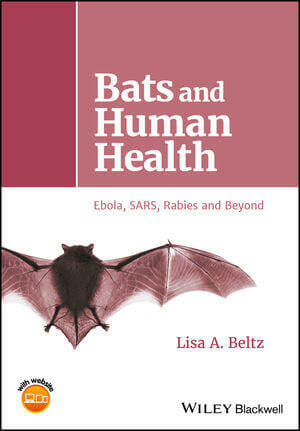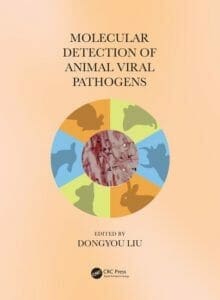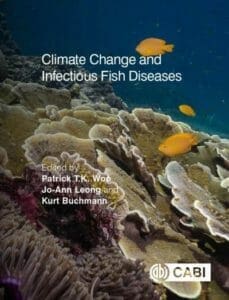Foreword xv
A Brief Introduction to Unique Features of Bats in Relation to Infectious Diseases xv
About the companion website xix
I Introduction 1
1 BAT IMMUNOLOGY 3
1.1 Introduction to the Immune System of Bats 3
1.1.1 White blood cell count and other serological parameters 3
1.1.2 Innate versus adaptive immunity 4
1.1.3 MicroRNA 5
1.2 Viral Pattern‐Recognition Receptors and the Bat Immune Response to Microbes 5
1.3 Introduction to the Interferons 7
1.3.1 Regulation of interferon production 7
1.3.2 The JAK‐STAT pathway and interferon‐stimulated genes 8
1.3.3 Type I interferons 10
1.3.4 Type II interferon 12
1.3.5 Type III interferons 12
1.3.6 Viral avoidance of the host IFN response 14
1.4 Antibodies and B Lymphocytes 15
1.5 Macrophages, Dendritic Cells, and Proinflammatory Cytokines 16
1.6 T Lymphocytes 17
1.7 Other Parameters of the Immune Response 18
1.8 Conclusions 19
References 21
II Viral Infections of Bats 25
2 RABIES VIRUS AND OTHER BAT RHABDOVIRUSES 27
2.1 Introduction to the Family Rhabdoviridae 27
2.2 Lyssaviruses 27
2.2.1 Rabies virus 32
2.2.2 Other lyssaviruses of bats 36
2.2.3 Lyssavirus transmission 40
2.2.4 Lyssavirus sites of infection 41
2.2.5 Lyssavirus entry into cells 42
2.2.6 Prevention of lyssavirus infection 43
2.2.7 Immune response to lyssaviruses 44
2.2.8 Lyssavirus surveillance 45
2.3 Other Rhabdoviruses 45
2.3.1 The Kern Canyon serogroup of genus Vesiculovirus 46
2.3.2 Kumasi rhabdovirus 47
2.3.3 Unclassified rhabdoviruses 47
2.4 Conclusions 48
References 49
3 HENIPAVIRUSES AND OTHER PARAMYXOVIRUSES OF BATS 53
3.1 Introduction to Paramyxoviridae 53
3.2 Diseases Associated with Paramyxoviridae 59
3.2.1 Henipaviruses and disease 59
3.2.2 Morbilliviruses and disease 59
3.2.3 Rubulaviruses and disease 60
3.3 Henipaviruses in Bats 60
3.3.1 Henipaviruses in bats from Oceania and Southeast Asia 60
3.3.2 Henipaviruses and bats from Africa 61
3.3.3 Henipaviruses in bats from Madagascar 62
3.3.4 Henipavirus proteins and infection of bats 62
3.4 Hendra Virus 64
3.4.1 Hendra virus in Australian bats, horses, and humans 64
3.4.2 Factors affecting levels of Hendra viruses in bats and the potential for zoonotic transmission 65
3.5 Nipah Virus 66
3.5.1 Nipah virus in humans and pigs 66
3.5.2 Nipah virus in bats from Malaysia and Indonesia 67
3.5.3 Nipah virus in bats from India and Bangladesh 68
3.5.4 Interspecies Nipah virus transmission via date palm sap and bat urine 68
3.6 Cedar Virus 70
3.7 Protective Bat Responses to Henipavirus Infection 70
3.7.1 The interferon/STAT pathway and henipaviruses 70
3.7.2 Antibodies and henipaviruses 72
3.7.3 Apoptosis 72
3.8 Methods of Preventing Henipavirus Infection 73
3.9 Rubulaviruses 74
3.9.1 Bat parainfluenza virus 74
3.9.2 Menangle virus in bats and domestic animals 74
3.9.3 Tioman virus in bats and humans 75
3.9.4 Tuhoko viruses in bats 75
3.9.5 Achimota viruses in bats 75
3.9.6 Sosuga virus in bats and humans 76
3.9.7 Jeilongvirus in bats 76
3.9.8 Mumps‐like bat virus 76
3.9.9 Mapuera virus in bats 76
3.10 Morbilliviruses in Bats 77
3.11 Belinga bat Virus 77
3.12 Large, Multiviral Studies of Paramyxoviruses in Bats 78
3.12.1 Multiviral paramyxoviruses studies in Asia 78
3.12.2 Multiviral paramyxoviruses studies in Africa 78
3.12.3 Multiviral paramyxoviruses studies in Madagascar and islands of the Southwest Indian Ocean 79
3.12.4 Multiviral paramyxoviruses studies in Oceania 79
3.13 Conclusions 80
References 82
4 FILOVIRUSES AND BATS 89
4.1 Filoviruses 89
4.1.1 History of filovirus infection 90
4.1.2 Filovirus disease 91
4.1.3 The roles of viral proteins 91
4.2 Marburg Virus 96
4.2.1 Marburg virus in humans and bats 96
4.2.2 Experimental infection of bats with Marburg virus 98
4.3 Ebola Virus 99
4.3.1 Ebola virus in humans and bats 99
4.3.2 Ebola virus and bats prior to the 2014 outbreak 99
4.3.3 EBOV incidence in bats during and after the 2014 outbreak 100
4.4 Lloviu and Related Filoviruses in Bats 101
4.5 Seasonality of Filovirus Infection in Bats 101
4.6 Factors Affecting Zoonotic Infection by Filoviruses 102
4.7 Filoviruses in Animals Other Than Bats 103
4.8 Conclusions 104
References 106
5 BATS AND CORONAVIRUSES 111
5.1 Introduction 111
5.2 SARS Coronavirus 114
5.2.1 The history of SARS 114
5.2.2 SARS pathology 115
5.2.3 Viral and cellular proteins and their role in entry into the host cells 116
5.2.4 SARS in civits and raccoon dogs 118
5.2.5 Relatedness of bat SARS‐like CoV to SARS‐CoV 119
5.3 MERS Coronavirus 122
5.3.1 MERS pathology 122
5.3.2 Viral and cellular proteins and their role in entry into the host cells 123
5.3.3 MERS‐CoV and spillover from domestic livestock 124
5.3.4 Relatedness of bat‐CoV to MERS‐CoV 126
5.3.5 Transmission of MERS‐CoV 130
5.4 Other Coronaviruses of Bats 131
5.5 Conclusions 133
References 134
6 OTHER RNA VIRUSES AND BATS 139
6.1 Introduction 139
6.2 Baltimore Class III Viruses and Bats 139
6.2.1 Orbiviruses 140
6.2.2 Rotaviruses 140
6.2.3 Pteropine orthomyxovirus group 140
6.2.4 Mammalian orthoreoviruses 154
6.3 Baltimore Class IV Viruses 156
6.3.1 Astroviruses 156
6.3.2 Flaviviruses 158
6.3.3 Hepeviruses 164
6.3.4 Picornaviruses 164
6.4 Baltimore Class V Viruses 165
6.4.1 Bunyaviridae 165
6.4.2 Orthomyxoviruses 168
6.4.3 Arenaviridae 170
6.5 Large, Multi‐Virus Studies 171
6.6 Conclusions 171
References 174
7 BALTIMORE CLASS I AND CLASS II DNA VIRUSES OF BATS 181
7.1 Introduction to Double‐ and Single‐ Stranded DNA Viruses 181
7.2 Baltimore Class I Viruses 181
7.2.1 Poxviruses 190
7.2.2 Adenoviruses 191
7.2.3 Herpesviruses 192
7.2.4 Papillomaviruses 194
7.2.5 Polyomaviruses 194
7.3 Baltimore Class II Viruses 196
7.3.1 Parvoviruses 196
7.3.2 Dependoviruses 197
7.3.3 Circular replication‐associated protein encoding single‐stranded DNA viruses 197
7.4 Conclusions 199
References 201
8 REVERSE‐TRANSCRIBING BAT VIRUSES AND LARGE‐SCALE BAT VIROME STUDIES 205
8.1 Baltimore Class VI Retroviruses 205
8.1.1 Exogenous and endogenous retroviruses and their life‐cycles 205
8.1.2 Viral polyproteins 208
8.1.3 Retroviral genera 209
8.1.4 Endogenous gammaretroviruses of bats and other mammals 209
8.1.5 Betaretroviruses of bats and other mammals 210
8.2 Evidence of Ancient Endogenous Virus Genomic Elements in Bat Chromosomes 211
8.2.1 Endogenous bornavirus genomic elements in bat chromosomes 212
8.2.2 Endogenous Ebola and Marburg virus genomic elements in bat chromosomes 212
8.3 Hepadnaviruses – Baltimore Class VII Reverse‐Transcribing DNA Viruses 213
8.3.1 Human hepatitis B virus 213
8.3.2 Orthohepadnaviruses and bats 214
8.4 Large‐Scale Bat Virome Studies 215
8.4.1 Bat virome studies in North America 215
8.4.2 Bat virome studies in Europe 215
8.4.3 Bat virome studies in Asia and Southeast Asia 216
8.4.4 Bat virome studies in Oceania 217
8.5 Conclusions 217
References 218
III Bacterial Infections of Bats 221
9 ARTHROPOD‐BORNE BACTERIAL INFECTIONS OF BATS 223
9.1 Introduction 223
9.2 Bartonella 226
9.2.1 Bartonella in bats from Asia 226
9.2.2 Bartonella in bats from Africa 226
9.2.3 Bartonella in bats from Europe 228
9.2.4 Bartonella in bats from the Americas 228
9.3 Borrelia 229
9.4 Rickettsia 230
9.4.1 Rickettsia and human disease 230
9.4.2 Rickesttsia and bats 231
9.5 Bat Ectoparasites As Bacterial Vectors 231
9.5.1 Bacteria from bat flies 231
9.5.2 Bacteria from bat ticks 232
9.6 Conclusions 234
References 235
10 OTHER BACTERIA AND BATS 239
10.1 Introduction 239
10.2 Leptospira 245
10.2.1 Leptospira in South America 245
10.2.2 Leptospira in Africa 246
10.2.3 Leptospira in islands of the Indian Ocean 246
10.2.4 Leptospira in Australia 247
10.3 Yersinia 248
10.4 Pasteurella 249
10.5 Mycoplasma 250
10.6 Waddlia 250
10.7 Rickettsia and Similar Bacteria 251
10.8 Bat Gastrointestinal Tract Bacteria 251
10.8.1 Gastrointestinal bacteria in bats of Southeast Asia and Oceania 251
10.8.2 Gastrointestinal bacteria in bats of Madagascar 252
10.8.3 Gastrointestinal bacteria in bats of the Americas 253
10.9 Large‐Scale Studies of Other Bat Bacteria 254
10.10 Bacterial Species Beneficial to Bats 255
10.11 Conclusions 256
References 257
IV Protist Infections of Bats 261
11 APICOMPLEXANS AND BATS 263
11.1 Introduction to Apicomplexa and Coccidea 263
11.2 Order Haemosporida 269
11.2.1 Invertebrate hosts of Haemosporida 269
11.2.2 Bat hosts of Haemosporida 270
11.3 Order Piroplasmida 272
11.3.1 Babesia species and bats 272
11.3.2 Other Piroplasmida in bats 272
11.4 Order Eimeriida 273
11.4.1 Toxoplasma gondii and bats 273
11.4.2 Eimeria species and bats 276
11.5 Order Adeleida, Crytoporidium Species, and Bats 277
11.6 Conclusions 278
References 280
12 KINETOPLASTIDS AND BATS 285
12.1 Kinetoplastids 285
12.2 Trypanosomes 289
12.2.1 Life cycles of trypanosomes 289
12.2.2 Trypanosomes and disease 290
12.2.3 Trypanosomes infecting bats throughout the world 290
12.2.4 Trypanosoma cruzi 293
12.3 Leishmania 295
12.3.1 Leishmania and disease 295
12.3.2 Leishmania and bats 296
12.4 Conclusions 297
References 298
V Fungal Infections of Bats 303
13 WHITE‐NOSE SYNDROME AND BATS 305
13.1 Introduction to Pseudogymnoascus destructans 305
13.2 White‐Nose Syndrome 306
13.2.1 Arousal, loss of fat reserves, and dehydration 308
13.2.2 The role of torpor in WNS disease dynamics 309
13.2.3 WNS and wing damage 310
13.3 The Geographical Distribution of White‐Nose Syndrome 311
13.3.1 WNS in North America 311
13.3.2 WNS in Europe 312
13.3.3 WNS in Eastern Asia 313
13.4 The Effects of White‐Nose Syndrome on Selected North American Bat Populations 313
13.4.1 WNS and Myotis lucifugus 313
13.4.2 WNS and Myotis sodalis 314
13.5 The Bat Immune Response to White‐Nose Syndrome 315
13.5.1 Leukocyte counts 315
13.5.2 Antifungal activity in the plasma 315
13.5.3 T helper cell activity in infected bats 315
13.5.4 Inflammatory activity in infected bats 315
13.5.5 Differences in the immune response to WNS in European and North American bats 316
13.5.6 Immune‐mediated pathology in WNS 317
13.6 Antifungal Agents 317
13.6.1 Antifungal compounds 317
13.6.2 Antifungal agents derived from bacteria 318
13.6.3 Antifungal agents derived from fungi 318
13.7 The Mycobiome of White‐Nose Syndrome‐Infected Hibernacula 319
13.8 Recovery and Recolonization 320
References 321
14 HISTOPLASMA CAPSULATUM AND OTHER FUNGI AND BATS 327
14.1 Fungal Species and Bats 327
14.1.1 Histoplasma capsulatum 327
14.1.2 Blastomyces dermatitidis 336
14.1.3 Pneumocystis 337
14.1.4 Coccidioides 337
14.1.5 Encephalitozoon 337
14.1.6 Other fungi of bats 338
14.2 Broad Surveys of Fungi in Bats 338
14.2.1 Asia 338
14.2.2 Europe 338
14.2.3 The Americas 339
14.2.4 Fungi inhabiting bat external surfaces 340
14.3 Experimental Infection of Bats with Fungi 341
14.4 Immune Response to Fungi 341
14.5 Yeast in Bats 342
14.5.1 Candida 342
14.5.2 Malassezia 342
14.5.3 Yeasts in Japan 342
14.6 Conclusions 343
VI Zoonotic Disease Transmission and Bats 349
15 ZOONOTIC TRANSMISSION OF DISEASE BY BATS AND OTHER ANIMALS 351
15.1 Introduction 351
15.2 Zoonotic Transmission of Infection by Bats 353
15.2.1 Direct or indirect zoonotic transmission by bats to humans 354
15.2.2 Transmission and persistence of viruses within and among bat species over large geographical ranges 354
15.2.3 Seasonal changes contributing to zoonotic transmission from bats 355
15.3 Zoonotic Transmission of Infection by other Animal Species 356
15.3.1 Zoonotic transmission by rodents 357
15.3.2 Zoonotic transmission by companion animals 359
15.3.3 Zoonotic transmission by selected agricultural animals 360
15.4 Factors that Increase the Risk of Zoonotic Infection by Bats 362
15.4.1 Increasing urbanization of bats 362
15.4.2 Human activities that increase contact with bats, including the bushmeat trade 362
15.5 Strategies to Prevent Zoonotic Transmission from Bats to Humans or other Animals 363
15.6 Conclusions 364
References 366
Index 371















![Ettinger’s Textbook of Veterinary Internal Medicine 9th Edition [PDF+Videos] Ettinger’s Textbook of Veterinary Internal Medicine 9th Edition [True PDF+Videos]](https://www.vet-ebooks.com/wp-content/uploads/2024/10/ettingers-textbook-of-veterinary-internal-medicine-9th-edition-100x70.jpg)

![Textbook of Veterinary Diagnostic Radiology 8th Edition [PDF+Videos+Quizzes] Thrall’s Textbook of Veterinary Diagnostic Radiology, 8th edition PDF](https://www.vet-ebooks.com/wp-content/uploads/2019/09/textbook-of-veterinary-diagnostic-radiology-8th-edition-100x70.jpg)






